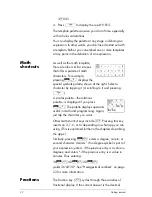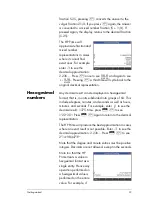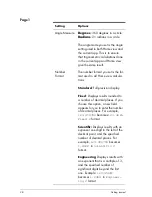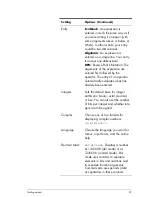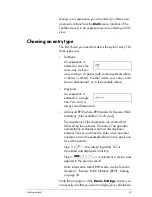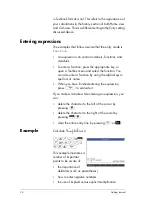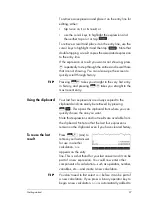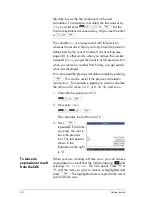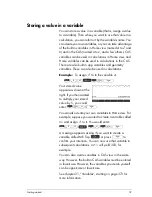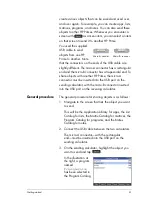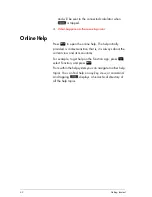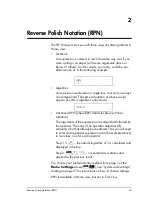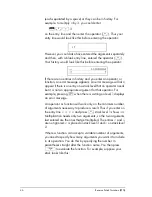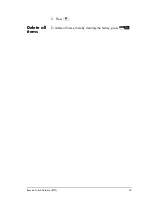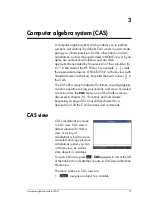
36
Getting started
10. Equals (=).
Negative
numbers
It is best to press
Q
to start a negative number or to
insert a negative sign. Pressing
w
instead will, in some
situations, be interpreted as an operation to subtract the
next number you enter from the last result. (This is
explained in “To reuse the last result” on page 37.)
To raise a negative number to a power, enclose it in
parentheses. For example, (–5)
2
= 25, whereas –5
2
=
–25.
Explicit and
implied
multiplication
Implied
multiplication takes place when two operands
appear with no operator between them. If you enter
AB
,
for example, the result is
A*B
. Notice in the example on
page 34 that we entered 14
Sk
8 without the
multiplication operator after 14. For the sake of clarity, the
calculator adds the operator to the expression in history,
but it is not strictly necessary when you are entering the
expression. You can, though, enter the operator if you
wish (as was done in the examples on page 35). The
result will be the same.
Large results
If the result of a calculation is too long to fit on the display
line in history, you can press
>
to scroll the display to the
right. Pressing
<
scrolls the display to the left.
If the result is too tall to be seen in its entirety—for
example, a many-rowed matrix—highlight it and then
press
. The result is displayed in full-screen view.
You can now press
=
and
\
(as well as
>
and
<
) to
bring hidden parts of the result into view. Tap
to
return to the previous view.
Reusing previous expressions and results
Being able to retrieve and reuse an expression provides a
quick way of repeating a calculation that requires only a
few minor changes to its parameters. You can retrieve and
reuse any expression that is in history. You can also
retrieve and reuse any result that is in history.
Summary of Contents for NW280-200X
Page 1: ...HP Prime Graphing Calculator User Guide ...
Page 4: ......
Page 56: ...50 Reverse Polish Notation RPN ...
Page 64: ...58 Computer algebra system CAS ...
Page 107: ...An introduction to HP apps 101 ...
Page 108: ...102 An introduction to HP apps ...
Page 188: ...182 Spreadsheet these variables is provided in chapter 21 Variables beginning on page 373 ...
Page 220: ...214 Statistics 2Var app ...
Page 252: ...246 Linear Solver app ...
Page 258: ...252 Parametric app ...
Page 268: ...262 Sequence app ...
Page 404: ...398 Units and constants ...
Page 416: ...410 Lists ...
Page 442: ...436 Notes and Info ...
Page 532: ...526 Limiting functionality ...
Page 536: ...530 ...
Page 540: ...534 ...

